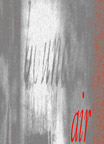
Transitional Space/The Third Space
"In this paper, I would like to connect architectural praxis with theories and practices of liminality. Liminality is a cultural and philosophical concept often used in contemporary discourse on art and spatial experience. Authors like Jonathan Hill and Gianni Vattimo also connect liminality and marginality in contemporary art practice to architecture. These authors define liminality as the conceptual, ephemeral relationships between people and spatial environments. Traditional, professional architectural practice is orientated around building procurement and objects rather than human experience, so that building users and architects who change, appropriate and subvert building agendas act as an illegal, politicised architect. Both Hill and Mitchell believe architects could supplant concerns for building objects with user experience by drawing from contemporary art practices that give priority to audience experience. The diverse practices of installation art make audience experience a central concern of the artwork.
Nevertheless, there is minimal recognition of philosophies of liminality within architectural discourse. Furthermore, and most importantly, there is little indication of how liminality may be put into practice. In this paper, I would like to begin to explore a praxis of liminality by connecting philosophies of liminality to theories and practices within contemporary of architecture and art. Praxis, here, refers to the theory-practice nexus. I would like to raise many of the difficulties associated with theories of liminality and conventional, modern architecture and art practices, as highlighted in my own, and other peoples. experiences. My aim is therefore to explore other ways of seeing architecture using the concept of liminality rather than proposing finite conclusions." From LOOKING FOR LIMINALITY IN ARCHITECTURAL SPACE by Catherine Smith.

